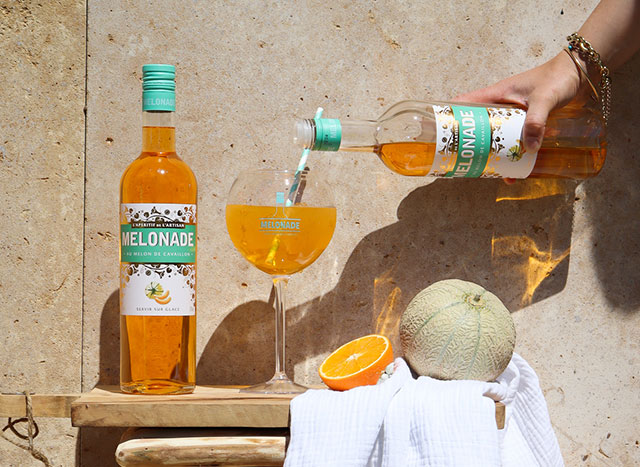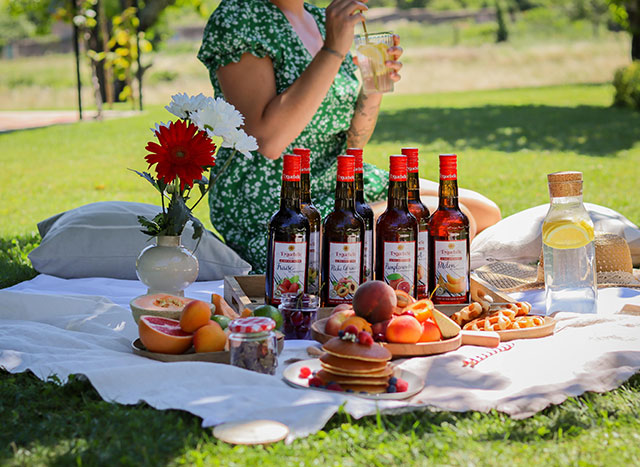
The Tumbler

A bit of history...
The Tumbler, also known as the Highball, first appeared in the 1930s in the United States. This thin-walled and long glass was perfect for adding ice cubes to refresh the entire drink.
At the time, the Highball cocktail composed of whiskey, soda or tonic and lots of ice was very popular.
The Tumbler glass is ideal for serving all types of cocktails, hot or cold, but especially long drinks.
Highball Whisky around the world
In Japan, it's a very popular cocktail. The drink has become an integral part of Japanese culture. Since alcohol is most often consumed with food, the Highball was the perfect cocktail to accompany Japanese cuisine, particularly raw fish. The Japanese generally make it with blends, using the occasion to promote their whiskies internationally.
In the United States, this cocktail is also making a strong comeback on the menus of leading cocktail bars. Americans make it with bourbon or Whiskey Rey. But any whisky will do.
For some years now, this trend has also been developing in France. Nevertheless, the idea of diluting their favourite spirit still baffles even the biggest whisky lovers.
Become a cocktail expert and make a Highball cocktail with our Eyguebelle tonic syrup.
Making your own Whisky Highball couldn't be easier! Choose a quality whisky that you like. Fill your tall glass with plenty of ice cubes, add 2 cl of Eyguebelle Tonic syrup, 4 cl of whisky and 10 cl of sparkling water of your choice. Stir your cocktail gently with a mixing spoon to even out the mixture.
The Margarita glass

The Margarita glass is a legendary cocktail glass, recognizable by its two curves and a large stem. The glass is traditionally used to serve the Margarita, a cocktail made with tequila, triple sec, and lime juice, but it is also used for other refreshing drinks such as the Daiquiri. For decoration, add a little sugar or salt using a rimmer to enhance the cocktail.
The Margarita became very popular in the 1950s and 1960s, thanks to the enthusiasm for tequila and Mexican cuisine in the United States. Associated with the beach and served next to loungers, the Margarita is also very trendy in trendy and contemporary bars in major cities, in its classic or revisited form. It also invites itself to households thanks to an easy recipe that can be made with few and accessible ingredients.
Discover the Margarita revisited by 1883:
- 1.5cl Cointreau
- 6cl Tequila
- 1.5cl Eyguebelle Lemon syrup
- Salt
The Martini glass

The Martini glass is the most iconic cocktail glass of all time. With its elegant shape and slender stem, it has become a symbol of sophistication and refinement.
From James Bond to Carrie Bradshaw in Sex and The City, the Martini glass has always been associated with elegant, seductive characters who enjoy their drinks in style.
Created in the 19th century, this glass was originally called a "cocktail glass". It was in the 1920s, during Prohibition in the United States, that it became very popular for its style, but above all because it allowed its contents to be quickly and discreetly discarded during surprise raids on speakeasies. This unusual-looking glass was later categorised as a "martini glass" to reflect its main beverage, the Martini cocktail, accompanied by its olive on a wooden spike, as well as classics such as the Manhattan and the Cosmopolitan.
Martini glasses offer several advantages for this type of cocktail. They often have a small capacity, which is ideal for high-alcohol cocktails. Another advantage is the good thermal insulation provided by the long stem. This ensures a grip that won't affect the temperature of the cocktail. Finally, its wide rim allows the aromas to spread evenly and its large surface area creates tension in the glass, allowing the bouquet of the spirits to be released effectively.
A classic yet elegant glass to have in your collection.
The copper mug

A bit of history...
It all began in the 1940s when three friends gathered at a bar in Los Angeles and decided to add ginger, lime juice, and crushed ice to their vodka glass.
In order to keep the drink fresh for longer, they decided to serve this cocktail in copper mugs and named it the Moscow Mule. Thanks to their originality, the copper mugs quickly contributed to the cocktail's growing popularity and are still used today to serve all kinds of drinks.
To make a Moscow Mule the way it should be, it's essential to serve it in a copper cup or mug, but that's not all:
The Equipment :
- Copper mug
- A measuring jug
- A bar spoon
- Citrus press
Ingredients
- Vodka: 4cl
- 2 cl Eyguebelle lime syrup
- Ginger beer: 12cl
- Large ice cubes or crushed ice
And a good recipe!
To make this Moscow Mule cocktail, follow these steps:
- Fill your copper mug with large ice cubes or crushed ice.
- Pour in 4cl of vodka
- Add 2 cl of Eyguebelle lime syrup
- Top up with 12cl of ginger beer
- Stir gently so as not to spill anything to chill the cocktail
- Add a slice of lemon or ginger, as desired.
You can also make a Virgin Moscow Mule without alcohol by removing the vodka and replacing it with sparkling water. Enjoy!
The Piña Colada glass

The Pina Colada glass, with its distinctive shape, instantly brings to mind images of sandy beaches, gently swaying palm trees, and tropical sunsets. Originally from Puerto Rico, the Pina Colada is a refreshing blend of pineapple juice, coconut cream, and rum.
This glass allows you to enhance the cocktail and add chunks of pineapple and coconut and ice cubes.
The Old Fashioned glass

The Old Fashioned glass takes its name from the famous Old Fashioned cocktail which was created towards the end of the 19th century and was made with whisky, sugar, bitters and a garnish of orange and cherry. The Old Fashioned glass, with its cylindrical design, large rim and dense base, was perfect for bringing out the complex flavours and aromas of the whisky.
Over the years, this glass has become a must-have for serving cocktails, as it can accommodate all kinds of garnishes, plenty of ice and is sturdy enough to use a masher.
The balloon glass

The balloon glass, also known as the pool glass or spritz glass, is an elegant stemmed glass that is very popular these days for cocktails with garnishes or requiring lots of ice.
Its origins date back to Antiquity, when the first glasses were made from hand-blown glass and were mainly used for drinking wine.
With its rounded, flared body, it allows the drink to breathe and release all its aromas and was soon used to make a wide range of cocktails. There are different sizes depending on the liquid it is to contain (wine, cognac, armagnac, pastis, etc.).
It is advisable to hold it by its slender foot when drinking, as this prevents the part containing the cocktail and the ice cubes from touching and therefore heating up the liquid. The cocktail will stay fresher for longer.
The role of glass shape
As with a decanter, the amount of air inside the glass plays an important role in developing the aromas of the beverage.
- The size of the neck will influence the position of the taster's head and tongue in contact with the liquid
- A slightly flared glass slows down the flow of liquid, accentuating the sensation of sugar and alcohol on the tip of the tongue,
- A thin glass with a narrow neck forces the taster to lean his or her head back, accelerating the arrival of the beverage on the back of the tongue by revealing its acidity.
- The rim of the glass, whether clean or bulging, plays an important role in the appreciation of a red or white wine.
What shape of glass do you prefer?














